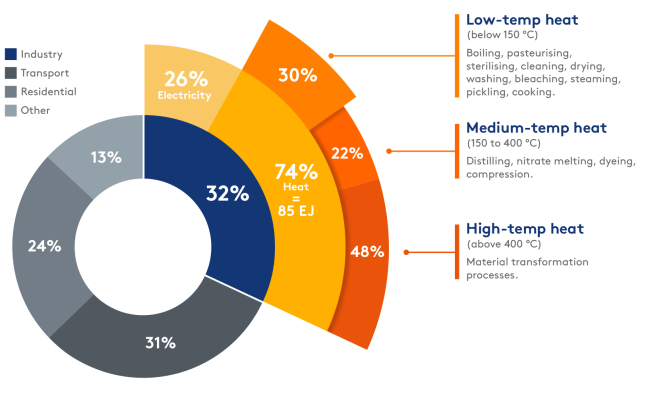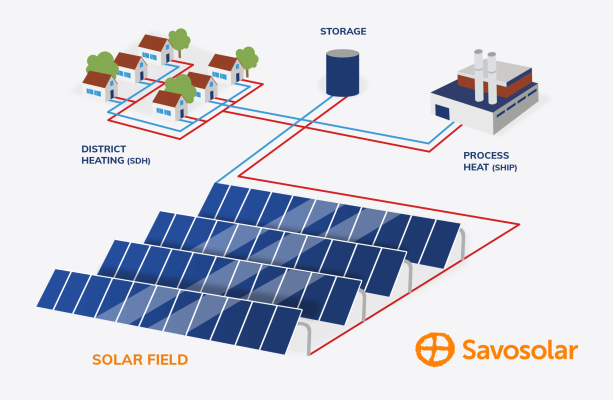Solar heat for industrial processes (SHIP) continues its steady growth. Thirty-two per cent of the world’s energy demand is used by industry, and around 75% of this is for heat. Of industrial heat use, some 30% is low temperature heat (<150 °C), which is particularly suitable to be produced by solar heat. There are several industries that benefit from different applications of solar thermal process heating. Among them are greenhouses, mining companies, dairies, brewing companies and other food industries – to name just a few.


The role of solar district heating plants in decarbonising the heating sector is particularly important. This cost-effective way of greening the heat supply of towns and cities is attracting new interest in markets around the world.
In most cases, solar energy contributes up to 20% of annual heat demand. Using seasonal storage can increase this fraction to 60% or more.
The number of solar district heating systems continues to grow, as they prove one after the other to be worth the investment, not only ecologically but also economically.
Solar cooling systems have multiple applications for improving the efficiency and profitability of cooling processes. Outside the cooling period, a solar thermal system can provide energy for domestic hot water and space heating needs, for example. In the warmth of summertime, adsorption chillers cool buildings down, driven by Savosolar’s solar thermal system.
We provide well designed and efficient solar thermal systems for the heating of towns and communities, as well as industrial processes. Savosolar’s energy solutions are focused towards large-scale applications. We deliver complete systems from design to installation, using the best local partners to help our customers produce competitive clean energy.
The introduction of solar heat will bring cost savings in the form of low and stable energy costs, with the ability to forecast future energy costs for years in advance.